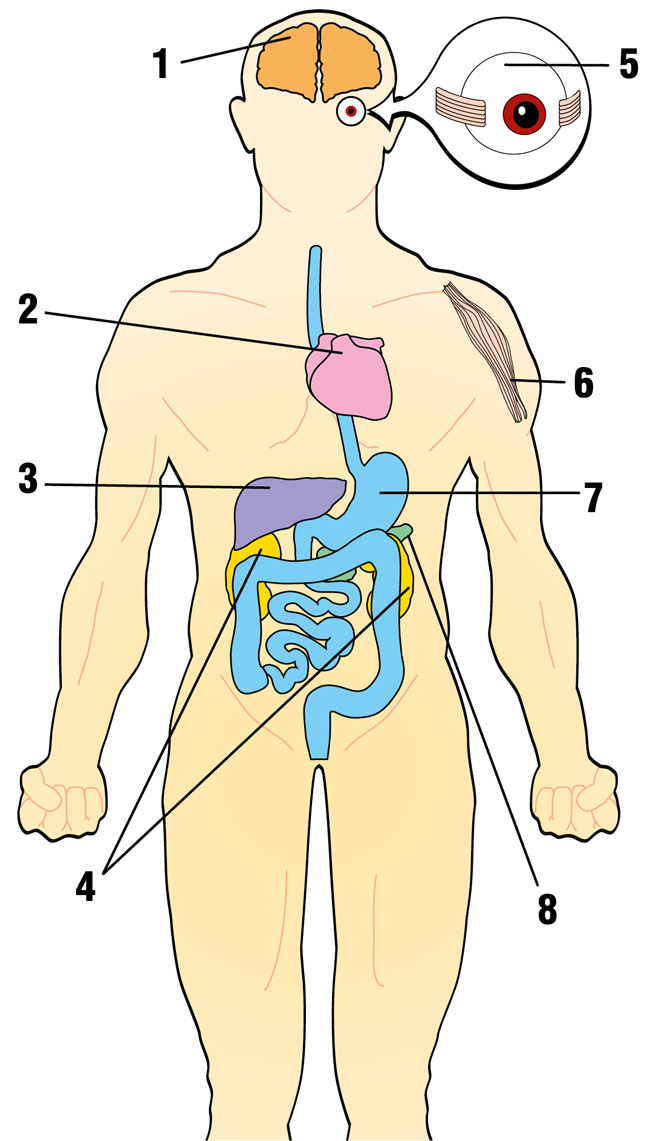Mitochondrial Myopathies (MM)
Mitochondrial Myopathies (MM)
What are mitochondrial myopathies?
Just as some diseases are named for the part of the body they affect (like heart disease), mitochondrial diseases are so named because they affect a specific part of the cells in the body. Specifically, mitochondrial diseases affect the mitochondria — tiny energy factories found inside almost all our cells.

- Nervous system: Seizures, spasms, developmental delays, deafness, dementia, stroke (often before age 40), visual system defects, poor balance, problems with peripheral nerves
- Heart: Cardiomyopathy (cardiac muscle weakness), conduction block
- Liver: Liver failure (uncommon except in babies with mtDNA depletion syndrome), fatty liver (hepatic steatosis)
- Kidneys: Fanconi’s syndrome (loss of essential metabolites in urine), nephrotic syndrome (uncommon except for infants with coenzyme Q10 deficiency)
- Eyes: Drooping eyelids (ptosis), inability to move eyes (external ophthalmoplegia), blindness (retinitis pigmentosa, optic atrophy), cataracts
- Skeletal muscle: Muscle weakness, exercise intolerance, cramps, excretion of muscle protein myoglobin in urine (myoglobinuria)
- Digestive tract: Difficulty swallowing, vomiting, feeling of being full, chronic diarrhea, symptoms of intestinal obstruction
- Pancreas: Diabetes
A mitochondrial disease that causes prominent muscular problems is called a mitochondrial myopathy (myo means muscle, and pathos means disease), while a mitochondrial disease that causes both prominent muscular and neurological problems is called a mitochondrial encephalomyopathy (encephalo refers to the brain). See Types of Mitochondrial Myopathies for more on nine specific mitochondrial diseases.
What are the symptoms of mitochondrial myopathies?
Muscular and neurological problems — such as muscle weakness, exercise intolerance, hearing loss, trouble with balance and coordination, seizures, and learning deficits — are common features of mitochondrial disease because muscle cells and nerve cells have especially high energy needs. Other frequent complications include impaired vision, heart defects, diabetes, and stunted growth.
Usually, a person with a mitochondrial disease has two or more of these conditions, some of which occur together so regularly that they are grouped into syndromes. For more, see the diagram to the right and Signs and Symptoms.
The main problems associated with mitochondrial disease — low energy, free radical production, and lactic acidosis — can result in a variety of symptoms in many different organs of the body. Tissues with high energy requirements, such as the brain, heart, and skeletal muscle, are primarily affected.
The diagram to the right depicts common symptoms of mitochondrial disease. Most affected people have some, but not necessarily all, of these problems.
What causes mitochondrial myopathies?
Mitochondrial myopathies are caused by mutations, or changes, in genes — the cells' blueprint for making proteins. They are inheritable, although they can occur with no family history, and they often affect members of the same family in different ways. For more, see Causes/Inheritance.
What is the progression of mitochondrial myopathies?
The age of onset and progression of mitochondrial myopathy varies greatly from type to type. See Types of Mitochondrial Myopathies for more information about the course of each disease.
What is the status of research on mitochondrial myopathies?
MDA-funded scientists have identified many of the genetic defects that cause mitochondrial diseases, and they have used that knowledge to create animal models of many of them. Understanding the genetic defects that cause mitochondrial myopathies opens up the possibility of developing treatments for these diseases. See Research for more.

